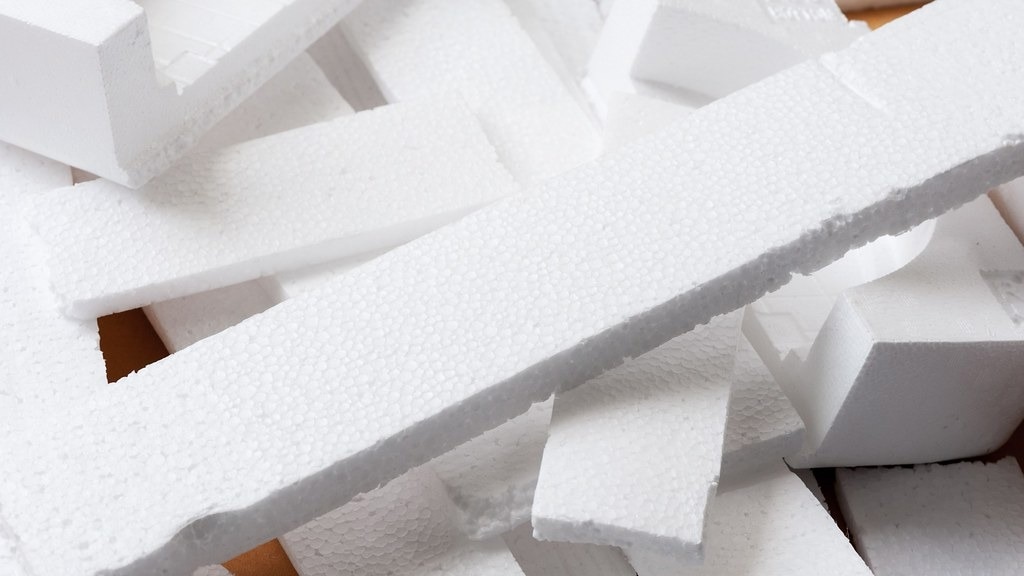In a recently published Chemical Engineering Journal, a team of chemical engineers from the University of Bath and Worcester Polytechnic Institute in Massachusetts, USA, have designed a new way to recycle polystyrene that might become the first practical method of making the material recyclable.
 Polystyrene is rarely recycled - but a new technique could make doing so more attractive. Image Credit: University of Bath
Polystyrene is rarely recycled - but a new technique could make doing so more attractive. Image Credit: University of Bath
According to the researchers, their technology might be the first to make economically and environmentally friendly polystyrene recycling.
The technology employs a chemical process known as pyrolysis to degrade polystyrene into pieces that can be reformed into fresh pieces of the material.
Chemical recycling techniques are a major focus within chemical engineering right now, and cost- and energy-efficient ways to breakdown plastics to their primary building blocks such as polystyrene are urgently needed, less than 5% of polystyrene is recycled at present – our work shows that as much as 60% of all polystyrene used today could be replaced by chemically recycled styrene.
Dr Bernardo Castro-Dominguez, Senior Lecturer, School of Chemical Engineering, University of Bath
Dr Castro-Dominguez is also a Co-Director of the Centre for Digital, Manufacturing & Design.
Michael Timko, PhD, Professor of Chemical Engineering at Worcester Polytechnic Institute, added, “Our analysis finds polystyrene to be an ideal candidate for a chemical recycling process. Surprisingly, the process is energetically efficient and potentially economically competitive. In terms of emissions, investing in this process has the potential to be equivalent to simple measures such as energy conservation in terms of the amount of emissions reduction that can be achieved for a given investment.”
Polystyrene can be chemically regenerated using heat, but repeated treatments damage the material, reducing its strength and flexibility. Since this procedure necessitates specialized equipment, most recycling facilities do not handle polystyrene, and because of its bulk and expensive transportation costs, it is seldom carried to these facilities. As a result, polystyrene is now recycled in extremely small quantities.
Pyrolysis is the process of subjecting a material to extremely high temperatures (over 450 °C) in an oxygen-free chamber, ensuring that it does not ignite. Instead, polystyrene breaks down into monomers, which can then be purified and reconstituted into virgin polystyrene. Creating one kilogram of the new material consumes less than 10 megajoules of energy, which is enough to power a microwave for around 30 minutes.
The identified process consists of a pyrolysis reactor, a heat exchanger, and a pair of distillation columns that separate the parts of polystyrene into ‘monomer grade’ styrene (the part that can be reformed into polystyrene) and ‘light’ and ‘heavy’ petroleum-like by-products that can be reused in other ways.
The technique offers a 60% yield, which means that for every 1 kg of used polystyrene, 600 grams of 99% pure monomer grade styrene are left available to manufacture new polystyrene, decreasing the consumption of fossil fuels. The study also emphasizes the environmental advantages, stating that the cost of reducing carbon emissions by deploying this technique is roughly $1.5 per ton of CO2, which is far less than many other recycling procedures.
According to the researchers, incentivizing consumers to recycle polystyrene or divert it from landfills would help make the procedure more economically appealing.
The study, “Thermodynamic and Economic Analysis of a Deployable and Scalable Process to Recover Monomer-Grade Styrene from Waste Polystyrene,” was financed by the US National Science Foundation (NSF) and published in the Chemical Engineering Journal.
Journal Reference:
Reed, M. R., et al. (2024) Thermodynamic and economic analysis of a deployable and scalable process to recover Monomer-Grade styrene from waste polystyrene. Chemical Engineering Journal. doi.org/10.1016/j.cej.2024.152079.